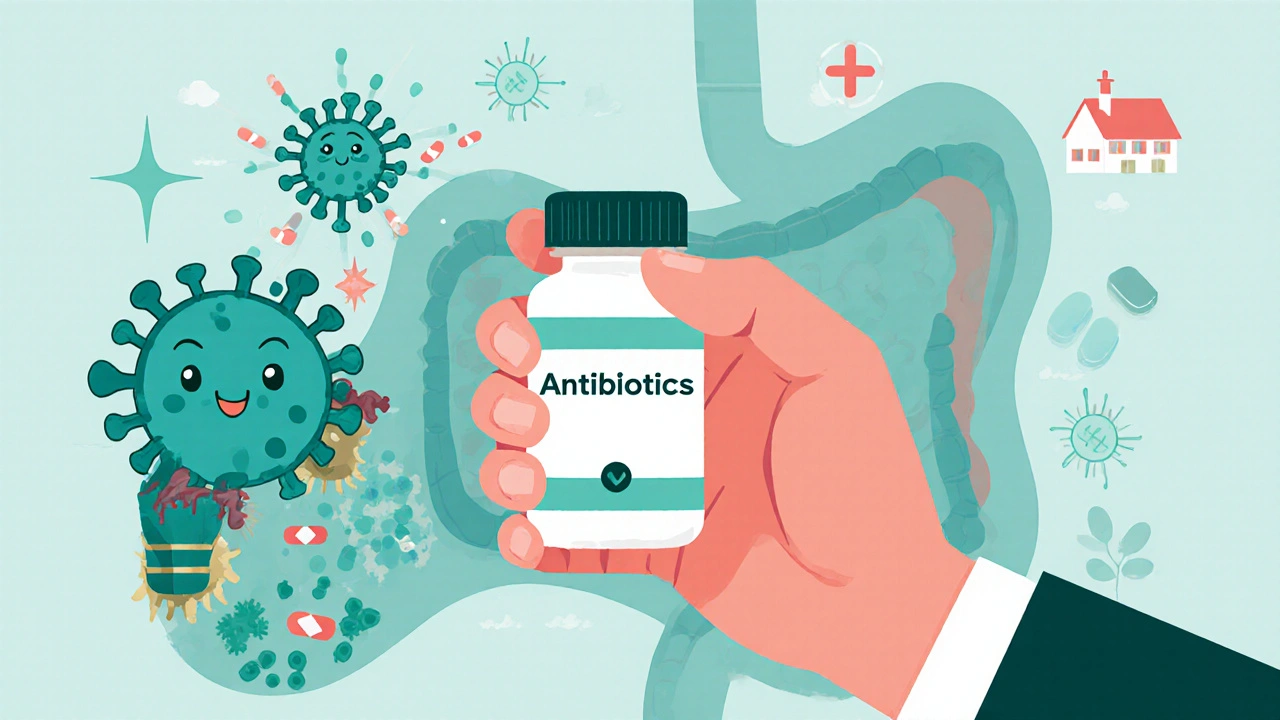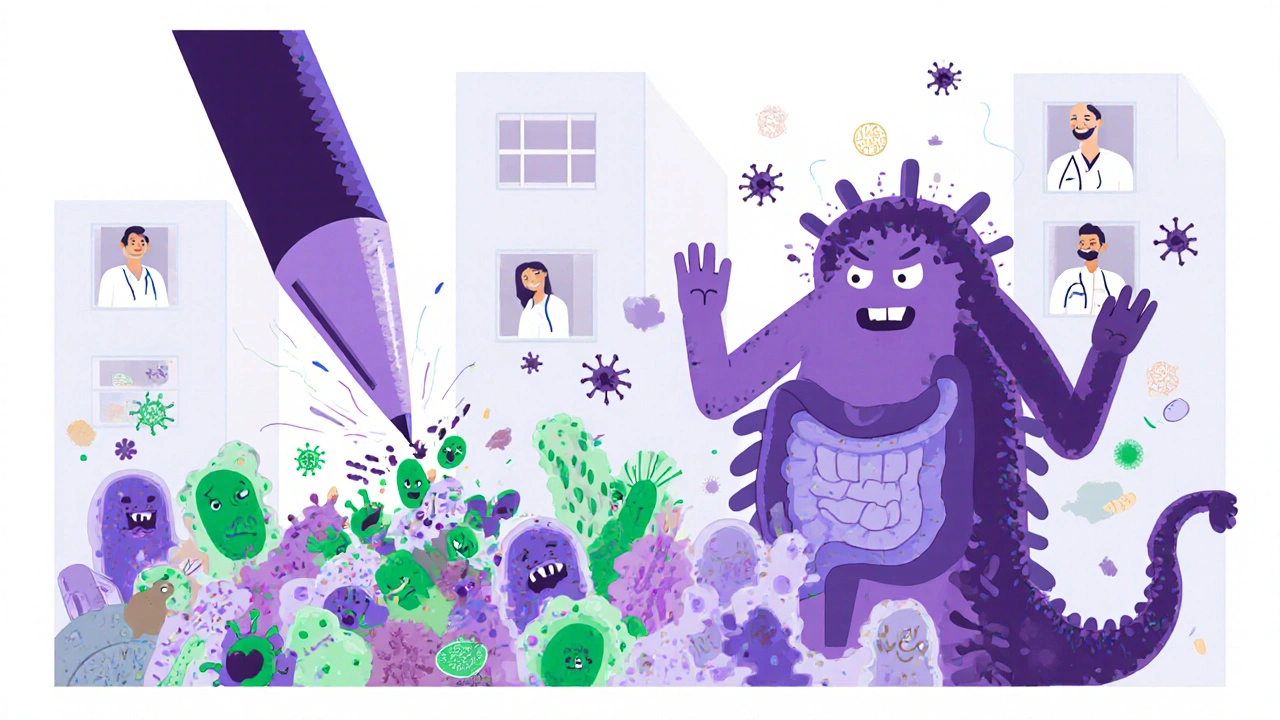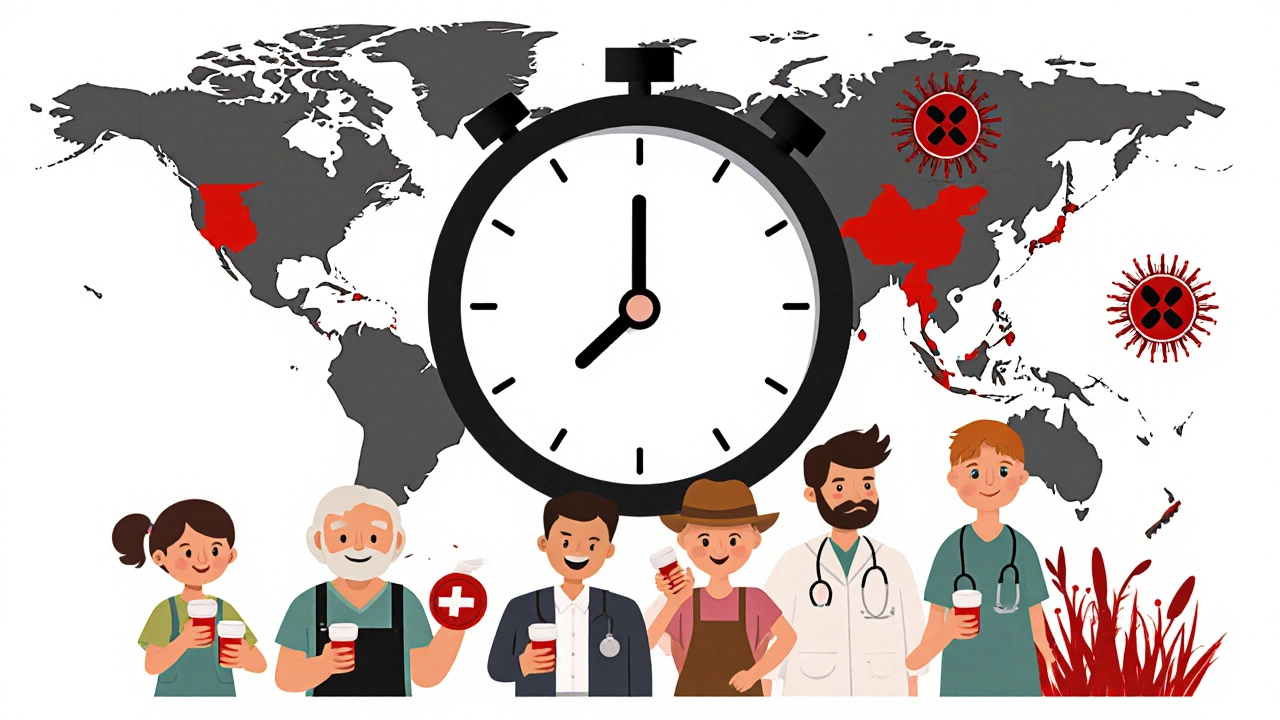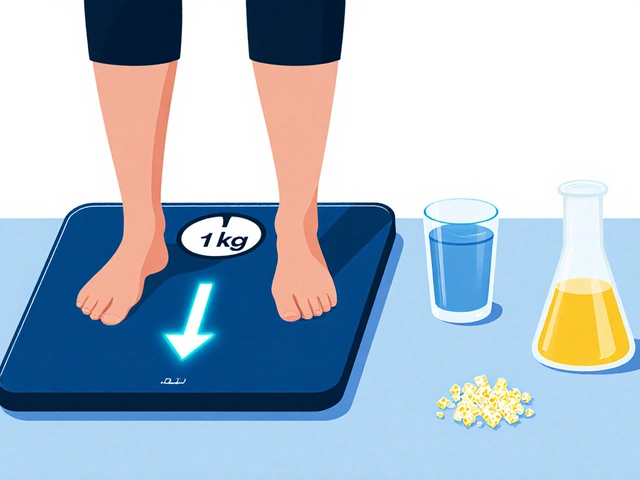
Every time you take an antibiotic when you don’t need it, you’re not just helping yourself-you’re helping bacteria become stronger. That’s the quiet, dangerous truth behind the rise of antibiotic resistance and the growing threat of C. difficile infections. It’s not science fiction. It’s happening right now, in hospitals, nursing homes, and even in your own home. And it’s getting worse.
What Happens When Antibiotics Don’t Work Anymore?
Antibiotics were once miracles. A simple pill could clear up a throat infection, a urinary tract infection, or a skin abscess. Today, that’s not always true. In 2023, one in six bacterial infections worldwide were resistant to the first-line antibiotics doctors usually reach for. That’s according to the World Health Organization’s latest global surveillance report. And the numbers keep climbing-by 5% to 15% each year in more than 40% of the bacteria-antibiotic pairs they track. This isn’t about being lazy or careless. It’s about biology. Bacteria don’t care about your intentions. When you take an antibiotic-even for a viral cold or flu-they’re exposed to the drug. The weak ones die. The ones with genetic mutations that let them survive? They multiply. Soon, the whole population of that bacteria type becomes resistant. That’s evolution, happening fast, in real time. Some of the worst offenders are common bacteria like Escherichia coli, Klebsiella pneumoniae, and Staphylococcus aureus. In many countries, over 40% of E. coli infections don’t respond to common antibiotics like ampicillin or co-trimoxazole. Methicillin-resistant Staphylococcus aureus (MRSA) is now found in 35% of cases across 76 countries. And last-resort drugs like carbapenems? Their effectiveness is dropping fast. Experts warn that by 2035, resistance to these final options could double compared to 2005 levels.C. difficile: The Hidden Cost of Antibiotic Use
One of the most dangerous side effects of antibiotic overuse isn’t resistance-it’s what happens inside your gut. Antibiotics don’t just kill bad bacteria. They wipe out the good ones too. Your intestines are full of trillions of helpful microbes that keep things balanced. When antibiotics destroy that balance, Clostridioides difficile (C. difficile) takes over. C. difficile isn’t new. But it’s becoming more common, more deadly, and harder to treat. It causes severe diarrhea, abdominal pain, and in worst cases, life-threatening colon inflammation. The CDC estimates that in the U.S. alone, it caused nearly half a million infections in 2017, with 29,000 deaths. While newer data isn’t fully available, trends show the problem is growing, especially in hospitals and long-term care facilities. Here’s the catch: you don’t need to be sick to get it. Just taking an antibiotic-even for a mild sinus infection-can set the stage. That’s why doctors now avoid prescribing antibiotics for viral infections. But many patients still ask for them. And too often, they’re given.
Why This Is Getting Worse
The pandemic didn’t just strain hospitals-it reversed years of progress. Between 2012 and 2019, the U.S. cut antibiotic-resistant infections by 18% overall, and nearly 30% in hospitals. Then came COVID-19. Antibiotic use surged. Infections like C. difficile spiked. Prevention efforts stalled. By 2021, all those gains were gone. It’s not just hospitals. In many parts of the world, people can’t get a proper test before they get an antibiotic. No lab? No problem. Doctors guess. They treat with antibiotics anyway. That’s called empirical use. And it’s a major driver of resistance. In South Asia and the Eastern Mediterranean, one in three infections are now resistant. In Africa, it’s one in five. The gap isn’t just about money-it’s about access to diagnostics, clean water, and trained staff. Even worse, the pipeline for new antibiotics is nearly dry. Drug companies don’t make money on antibiotics the way they do on pills for diabetes or high blood pressure. A course of antibiotics lasts days. A pill for cholesterol lasts a lifetime. So why invest billions in research for something that’s used briefly and needs to be reserved for emergencies? The result? Only a handful of new antibiotics have been approved in the last 10 years. And many of them are already losing effectiveness.What You Can Do-And What You Shouldn’t
You don’t need to be a doctor to fight antibiotic resistance. Here’s what actually works:- Don’t ask for antibiotics for colds, flu, or sore throats. These are usually viral. Antibiotics won’t help. They’ll only make resistance worse.
- Take antibiotics exactly as prescribed. Never skip doses. Never save leftovers for next time. Never share them.
- Ask your doctor: “Is this really necessary?” If they say yes, ask: “Is there a narrower-spectrum option?” That means a drug that targets only the bad bacteria, not everything in your gut.
- Get vaccinated. Flu shots, pneumococcal vaccines, and other immunizations reduce the chance of getting infections that might lead to unnecessary antibiotic use.
- Practice good hygiene. Wash your hands. Cover your cough. Clean surfaces. It’s the simplest way to stop infections before they start.

The Bigger Picture: A System in Crisis
This isn’t just about individual choices. It’s about broken systems. Hospitals don’t always have the tools to test quickly. Pharmacies in low-income countries can’t always stock the right drugs. Farmers still use antibiotics to make livestock grow faster, not just treat illness. And governments? Many still don’t treat antibiotic resistance like the emergency it is. The WHO’s Global Action Plan, signed by 194 countries in 2015, laid out a roadmap. But implementation is patchy. Only 64% of countries have a national plan. Only 30% have enough funding to carry it out. Meanwhile, the economic cost is skyrocketing. By 2030, resistant infections could cost the global economy $3 trillion a year. By 2050, if nothing changes, 10 million people could die annually from antibiotic-resistant infections-more than from cancer. Dr. Kelly Dooley at Vanderbilt University puts it bluntly: “Sometimes we don’t have anything effective to offer. That’s a terrible position for a patient and clinician to be in.”It’s Not Too Late-But Time Is Running Out
We still have tools. We still have time. But we need to act like we mean it. That means better diagnostics in clinics. Stronger rules on antibiotic use in farming. More funding for new drug development. And above all, a cultural shift: antibiotics aren’t harmless magic pills. They’re powerful, fragile tools-and we’re using them like they’re candy. The next time you or someone you love is prescribed an antibiotic, pause. Ask the question. Think about the consequences. Because every pill you take, every time you push for one, every time you finish a course properly-it adds up. Not just for you. For everyone.Can antibiotics treat a cold or the flu?
No. Colds and the flu are caused by viruses, not bacteria. Antibiotics only work against bacterial infections. Taking them for viral illnesses doesn’t help you recover faster and only increases the risk of antibiotic resistance and C. difficile infections.
Is C. difficile only a hospital problem?
No. While C. difficile is most common in hospitals and nursing homes, it’s now appearing in people who’ve never been hospitalized. Anyone who’s taken antibiotics recently-even a short course for a sinus infection-is at risk. Community-associated C. difficile cases have been rising since 2018.
Why aren’t there more new antibiotics being developed?
Because it’s not profitable. Antibiotics are used for short periods, unlike drugs for chronic conditions like diabetes or high blood pressure. Companies invest billions in research but often earn little back. Public-private partnerships like CARB-X are trying to fill the gap, but funding still falls far short of what’s needed to keep up with resistance.
Are natural remedies a good alternative to antibiotics?
No. While some natural products may support immune health, none have been proven to cure bacterial infections like pneumonia, strep throat, or urinary tract infections. Relying on unproven remedies can delay proper treatment and lead to serious complications. Always consult a doctor for suspected bacterial infections.
How do I know if I really need an antibiotic?
Your doctor should explain why they believe it’s a bacterial infection-based on symptoms, duration, and sometimes lab tests. If you have a sore throat with fever and swollen tonsils, it might be strep. If you have green mucus for a week, it might be a bacterial sinus infection. But if you have a runny nose, cough, and mild fever for a few days, it’s likely viral. Ask: “What’s making you think this is bacterial?”
Can I stop taking antibiotics if I feel better?
No. Stopping early leaves behind the strongest bacteria, which can survive and multiply. That’s how resistance starts. Always finish the full course-even if you feel fine-unless your doctor tells you otherwise.
Do antibiotics in meat affect human health?
Yes. When farm animals are given antibiotics to promote growth or prevent disease in crowded conditions, resistant bacteria can spread through meat, water, and soil. These bacteria can then transfer to humans through food or the environment. Many countries have restricted this use, but it’s still common in places without strong regulations.





Conor McNamara
November 17, 2025 AT 14:35 PM
they told us antibiotics were magic pills... now they say we’re the problem? funny how the same people who sold us the pills are now selling us the guilt. i think the real story is hidden in the labs where they’re already making superbugs on purpose. why? because control. always control. you think this is about health? nah. it’s about who owns the cure.